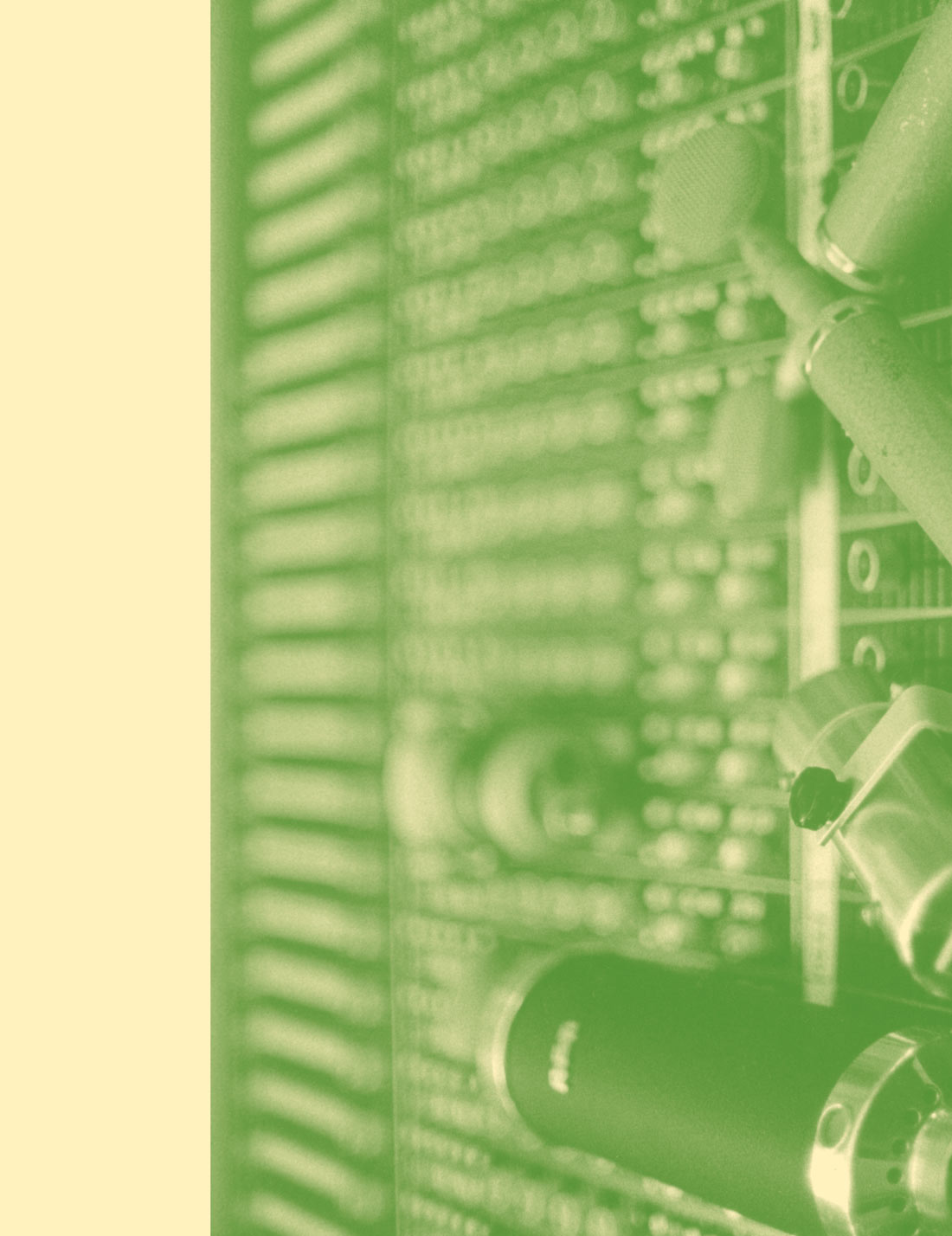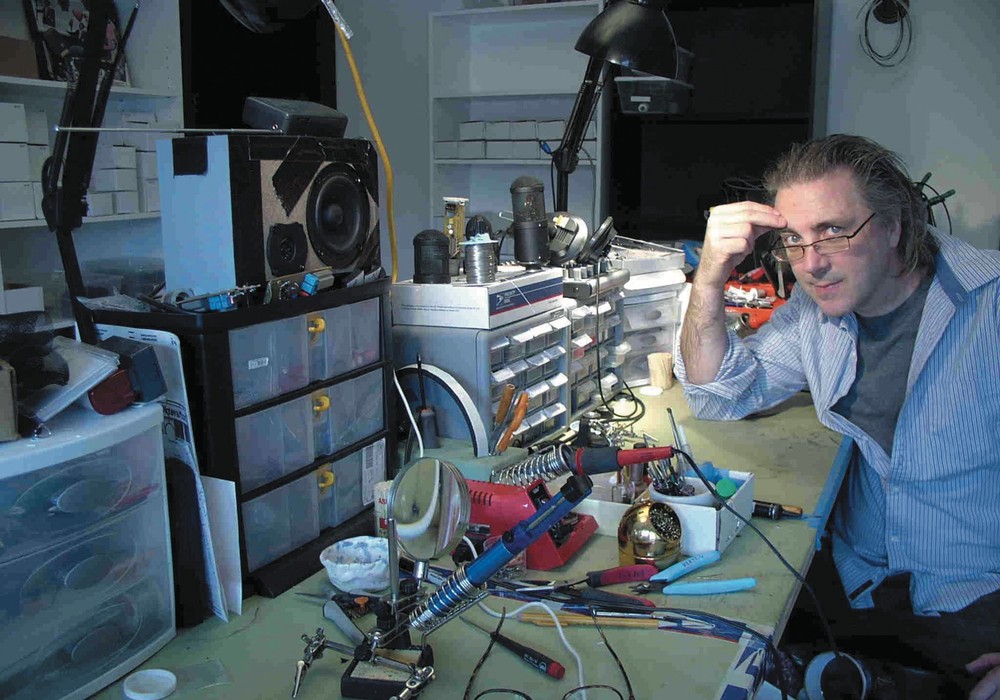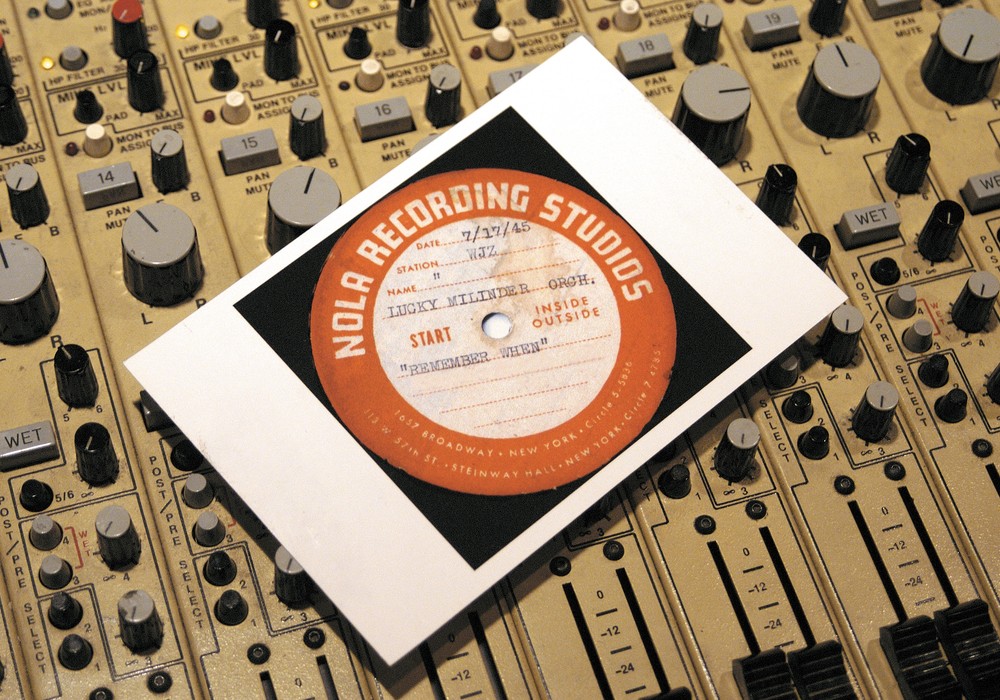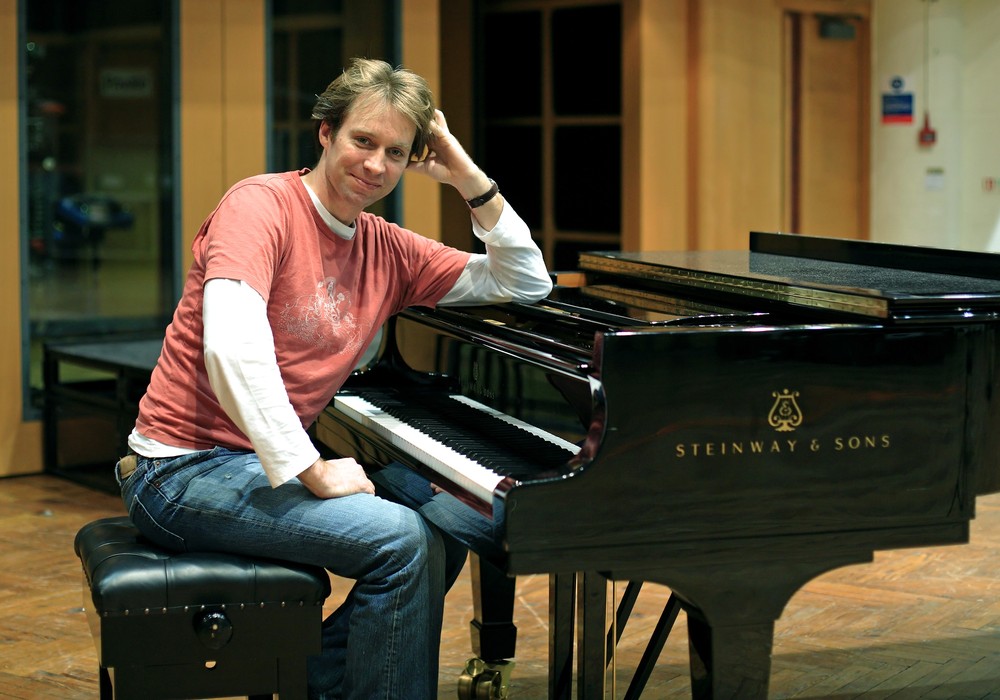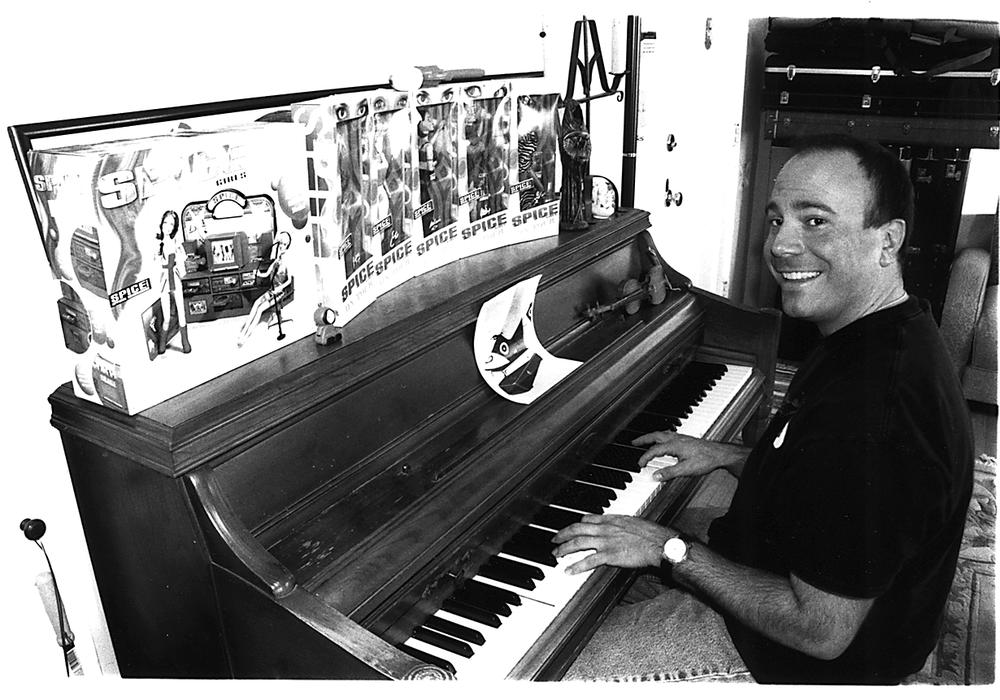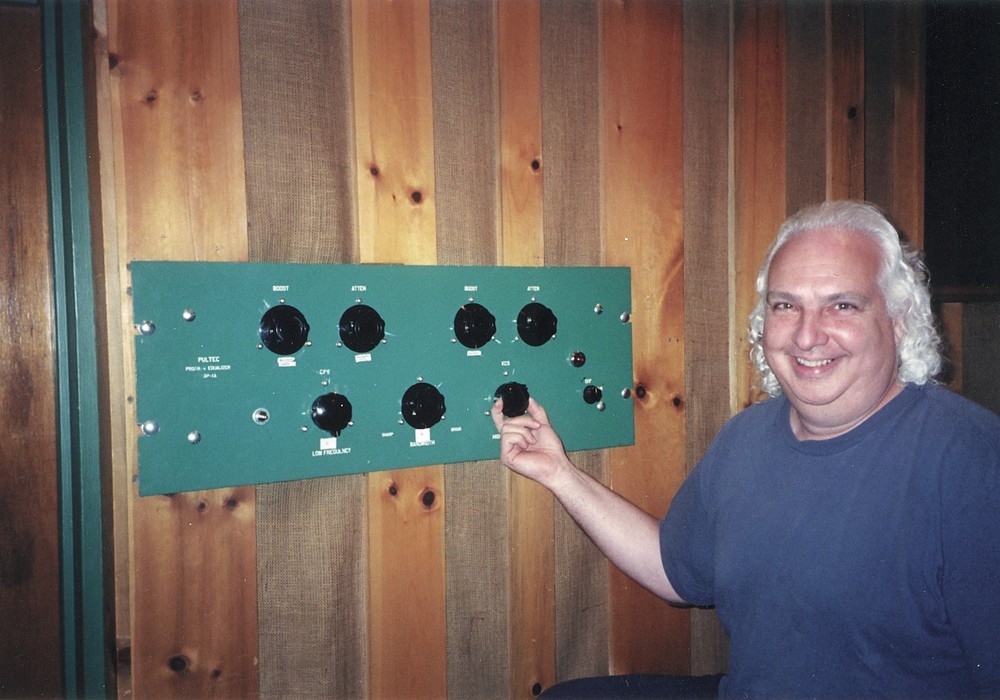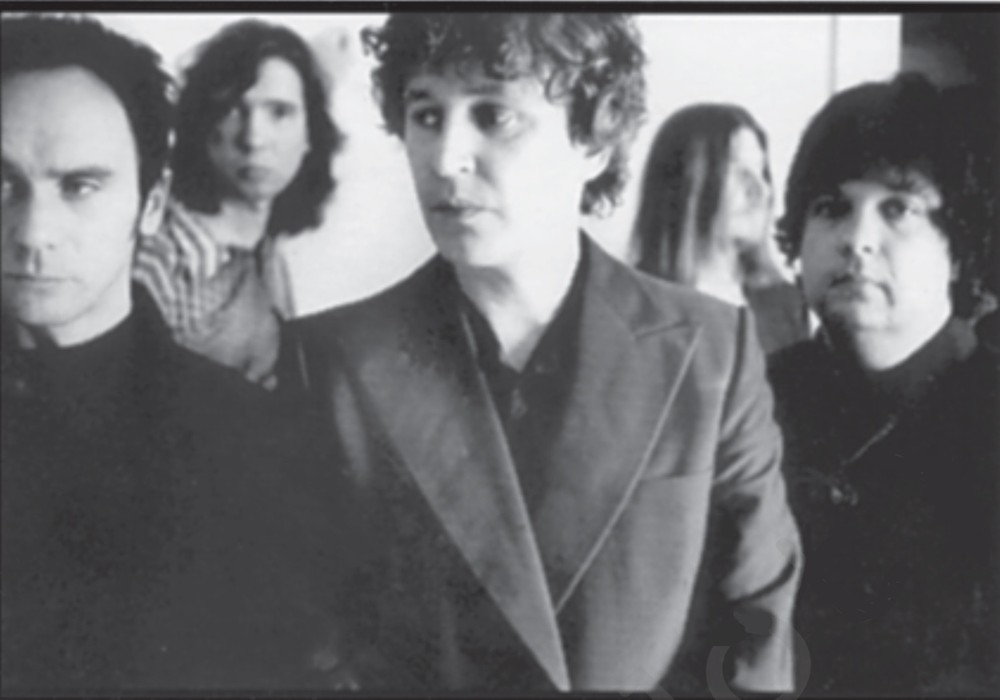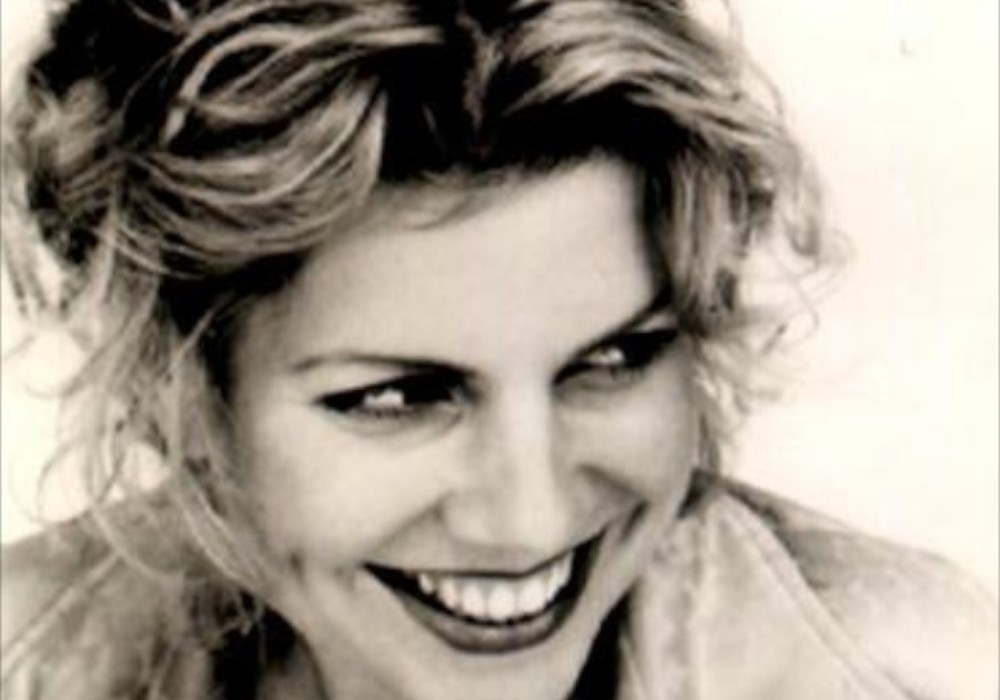The day we decided to formalize an interview turned out to be the day their new Auditronics console was arriving. Until we had to repair to Union Ave. to figure out how to get the legs off to fit the thing in the door, I sat around with Tony and his partner Joel Hamilton and talked about everything from the old days of recording in Cleveland to digital audio, to Tony's favorite bass recipes.
What's the deal with the new console that's coming?
TM: I feel just so happy for Joel that he's getting his old board back. [Joel's Kansas City studio flooded, several years ago, destroying a lot of gear, including a vintage Auditronics mixing desk.] It's a real auspicious day. I'll let Joel tell about the Auditronics, cause I always like to hear him tell the stories...
JH: It's a great old console that was made in Memphis by a bunch of engineer nerds. They're now a broadcast console company but they started out doing recording desks. It's going to be a really nice signal path to go with the Pro Tools HD rig. Just a cool front end I like everything about it. The EQ is awesome.
So spec out the one you're getting.
JH: It's 32x16x2, or by four if we were mixing in quad, which we don't often do here. [laughs] But it was originally intended for quad mixing. 16 bus has really weird routing options, so that any channel can be the master fader, you can patch right out of the bus outs. You could make an entire group and send it to one fader, you could have a mono drum group, that's 16 channels of drums and return it to just one fader. There are a couple of stereo faders down to the right in the monitor section. It's an inline console, but there's sort of a little monitor section that doesn't have any EQ or anything, just faders.
TM: Are those right on the channel strip like on an MCI, or are they second little...
JH: No, it's an inline console so there's like a strip, then the fader, and then this switching module dedicated to each one but there's a way that they made the routing matrix so that you could have a blank panel where the strip's supposed to be, and go right from the switching module to the fader. Without actually having to go through any electronics, so you can actually bus to a fader, it's just like patching in a Neve to the fader ins. Or MCI or any big console. But it actually, there's a way to, like the line driver is in the switching module, rather than in the strip itself. So it's kind of cool, you could mix an entire project without any of the EQs or mic pres in the board. As long as you have the switching module and the fader.
TM: Yeah but what your saying about this EQ, sounds like I'd want it for sure... Oh man we're so psyched. [To Joel] You were telling me about those coils... Joel's totally rebuilt his, so he's been underneath the hood.
JH: For each band there's a big inductive coil, it's a hybrid board, so the op amps are ICs but everything else is discrete. So just the op amp is miniaturized, but everything else is completely discrete components. Including the big copper doughnuts that are for each band in the EQ. So that's what makes it sound "right". 'Cause it's not a bunch of chips, there's no signal that goes through a chip in the board. It was a cool weird interim period when op amps were this big and they could finally make 'em that big.
TM: So if you have like that, specific board, and you have one of these Allison jams, (turns to an Allison Electronics passive notch filter, a huge green rack box with one large dial on it) and you get it to the exact right frequency, a gold record comes out. [laughter] And a sushi deluxe to go. Joel just got that thing — look at that thing.
JH: I think it was originally used as...
